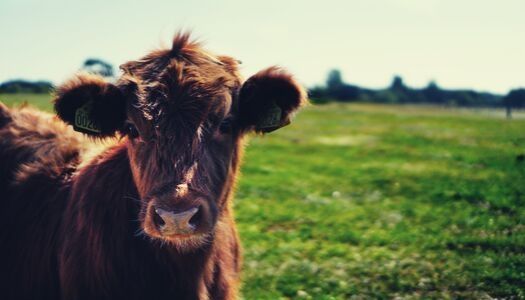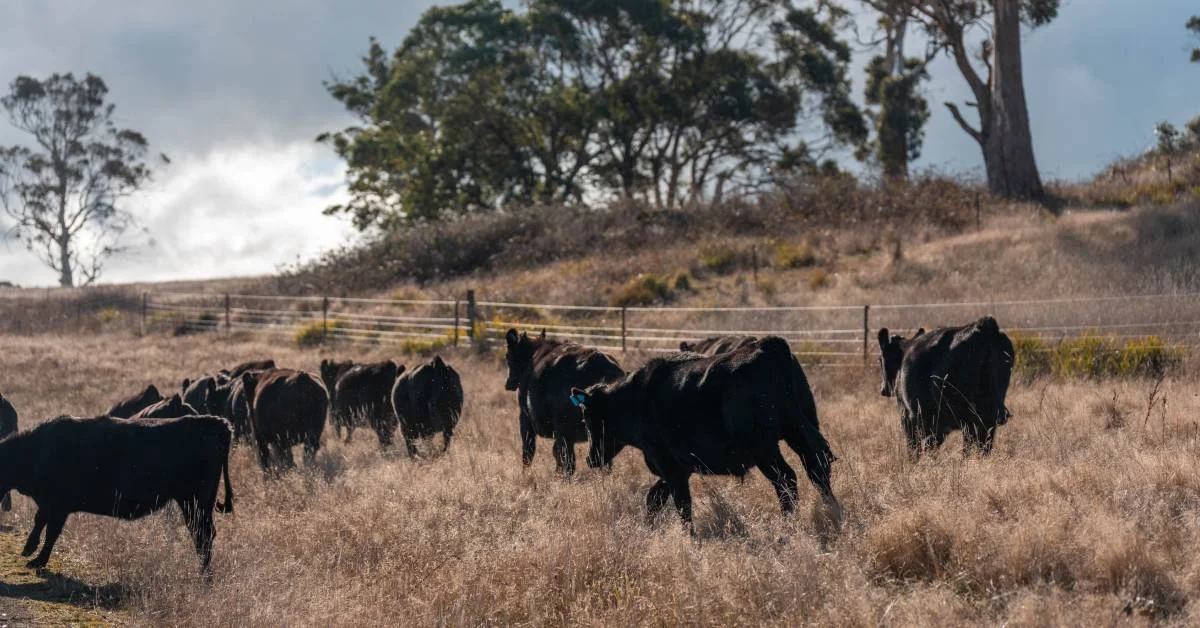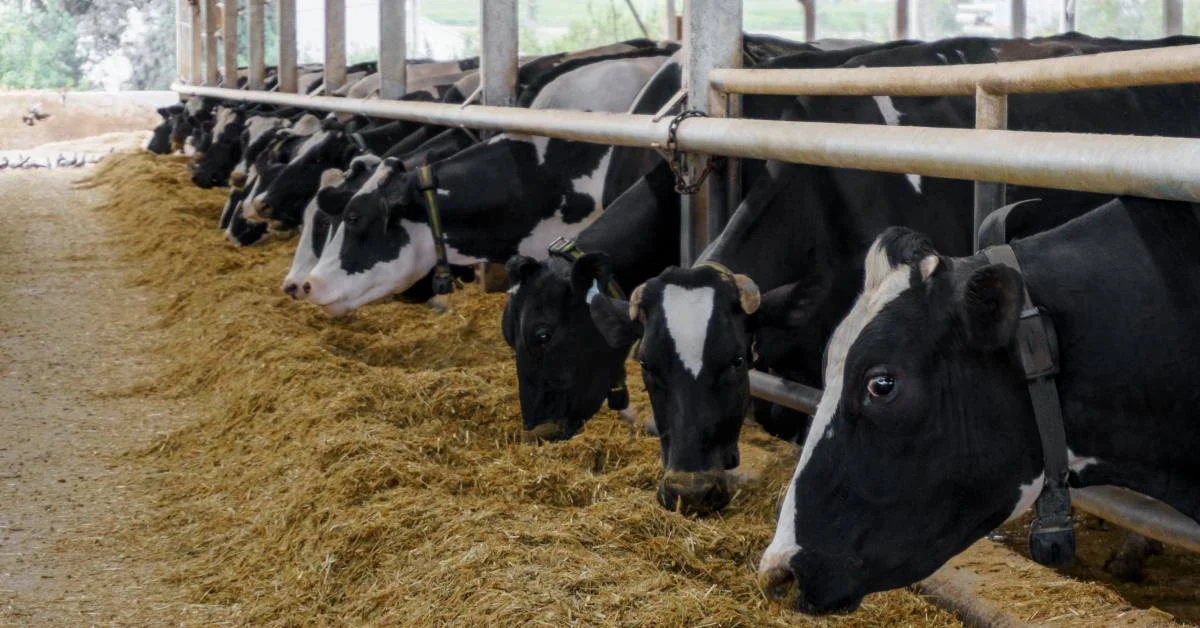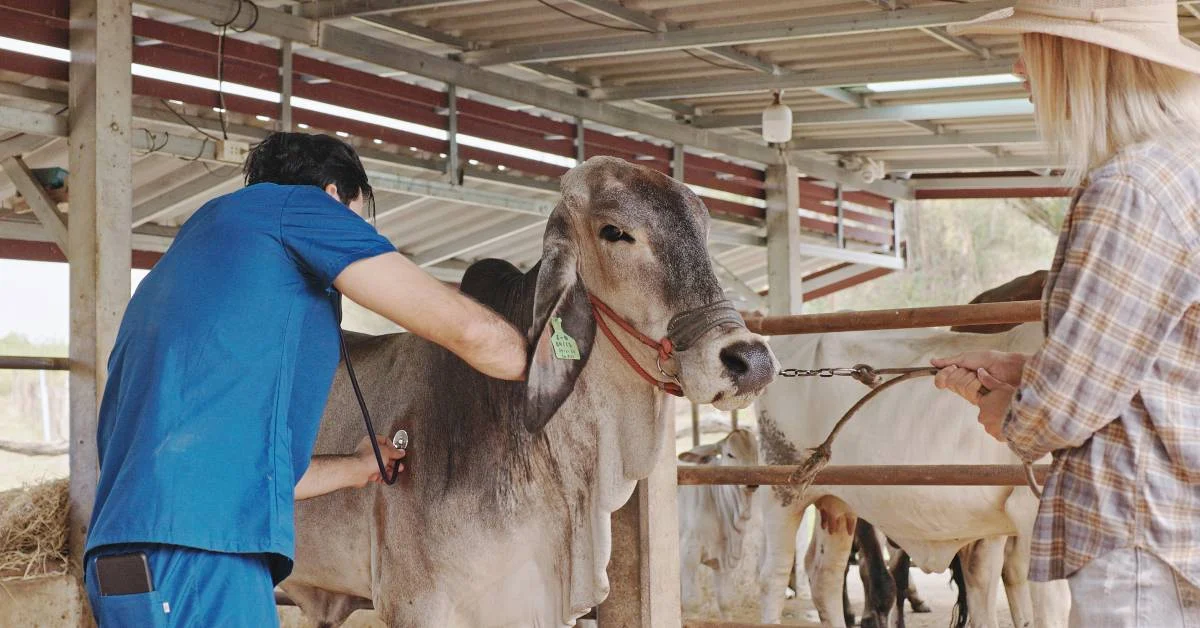- What is Biosecurity?
- Why you need biosecurity for beef, cattle and pig farming?
- How many levels of biosecurity are there?
- How to develop a Farm biosecurity plan for beef, cattle, and pork?
- How often should a biosecurity plan be updated?
What is Biosecurity’s Definition?
Biosecurity, a set of coordinated procedures, deals with the threats posed by contagious viruses and infectious diseases in a strategized way. There are different kinds of biosecurity programs such as farm, dairy cattle, general grazing animals, and plant biosecurity. All the biosecurity programs are designed according to the requirements of its users.
The term ‘biosecurity’ was first coined by the agriculturists to define procedures adopted to secure farm and plants from the potential risks of viruses and diseases. However, the term is also used in reference to laboratory biosecurity. The usage in this context implies the protection and removal of harmful biological material from research labs, which can be used to cause destruction and biological terrorism. The term ‘biosecurity’ and ‘biosafety’ are entirely different. Their usage must not be confused when used in reference to laboratory biosecurity. The former refers to the protection of harmful biological material from being abused, and the latter refers to protecting people from harmful germs and processes.
A detailed guide on the development and implementation of farm biosecurity programs is available online for farmers and cattle breeders around the globe. The purpose of adopting the particular biosecurity plan is to prevent the outbreak of plague in cattle herds caused by infectious diseases.
Wondering how often should a biosecurity plan should be updated? Fret not; this guide by Folio3 Agtech includes detailed information on the topic. Thus, not only educating cattlemen on how to develop and implement a personalized biosecurity plan but also providing post-implementation support. Additionally, the guide also addresses common queries such as how many levels of biosecurity are there and much more!
Why do you need biosecurity for beef, cattle and pig farming?
When it comes down to specific cattle breeding such as beef cattle and pig farming, the implementation of a biosecurity plan is heavily advised to the cattle raisers. Since the meat obtained from these cattle is used in the preparation of food worldwide, no risks should be taken. One sick animal on a farm may infect the whole herd. Neglecting such cases can put the health of millions of people worldwide in grave danger.
Problems in the past like the outbreak of swine fever in 1997, foot and mouth disease 2001, and pandemic H1N1 2009 outbreak have further led to strengthening the belief that proper biosecurity measures must be installed. These epidemics affected the lives of humans and farm animals likewise and incurred substantial financial and economic costs.
Governments, scientists, and research organizations from all around the globe are taking serious steps to curb all the roots of such diseases. It is being done by providing guidance to cattle breeders on the role of biosecurity in prevention from weeds, pests, and other kinds of diseases.
Biosecurity measures require the cattle breeders to implement biosecurity plans as provided by their respective governments. If they wish to develop their own custom plan, they may do so according to the guidelines provided. The implementation of these plans is a must since it includes many steps from checking the animals for any symptoms of potential diseases to the isolation of the affected cattle. After the affected herd has been isolated, it is quarantined, and then culled depending upon the severity of its disease.
In this way, biosecurity helps in the identification and elimination of worst-hit animal herds. It helps in preventing the infections from spreading to larger herds of cattle.
Biosecurity steps help in uprooting pests, rodents, weeds and other disease carriers from the farm by ensuring their entrance into the premises is blocked. These steps include wooden fencing, barbed wire fencing and installation of gates.
How many levels of biosecurity are there?
An important step in implementation of biosecurity measures is educating the cattle raisers on how many levels of biosecurity are there and which one should they implement. There are three levels of agricultural biosecurity.
Conceptual or Primary level biosecurity
The conceptual level of biosecurity requires the cattle breeders to locate their farms far away from publically dense places. It involves locating the animal facilities in relatively remote isolated areas. Moreover, it helps in the prevention of the introduction and spreading of any disease because of its densely populated surroundings.
Structural or secondary level biosecurity
The structural level of biosecurity has more to do with the physical structure of the farm, the drainage facilities, fencing, and design. The steps involved in this level help in the prevention of infections by taking care of on-site hygiene and movement of vehicles, equipment, and persons on the farm.
Procedural or Tertiary level biosecurity
The procedural level of biosecurity involves steps that ensure the avoidance of infection carriers and their emergency treatment in case of diagnosis within the facility.
Cattle breeders implementing biosecurity programs on their farms must analyze which level of biosecurity does their farm requires and implement programs accordingly.
How do we develop a Farm biosecurity plan for beef, cattle, and pork?
Different farm biosecurity plan templates are available online, which may assist cattle breeders in developing their own custom-tailored plan. However, listed below are a handful of concise points to help you develop your own farm biosecurity plan for beef cattle and pork exclusively.
Inspect animals
Before you buy the animals for your farm, try inspecting their health conditions to the best of your knowledge. After you buy them and get them transported to your farm using cattle record keeping software, hire a proper veterinarians services to give your herd a proper medical checkup.
Segregate the incoming cattle
When you decide to bring in new cattle to your farm, isolate them from the existing ones for at least 21 days. Keep a close check on them for any signs of bad health and diseases.
Isolate the affected
If you notice any signs of illness, then isolate your affected herds from the healthier ones since the disease spreads easily through contact and get in touch with your veterinarian.
Identify the cause of the disease
The disease in cattle usually is introduced via infected air, improper sanitation, contaminated feed and direct contact with a wounded or infected animal. Additionally it may also be a result of mating of a healthy animal with an infected animal. Other causes may include use of contaminated vehicles, soil and equipment on the farm.
Get your animals treated
Quarantine these animals and engage medical help as soon as possible for your infected herds. These treatments will include vaccinations and immunity-boosting solutions. However, if a herd is severely affected and has no other option left but to be destroyed, then you may have to do so.
Create a vaccination schedule
Once you have got your animals treated, based on their health requirements, create their vaccination schedule with your veterinarian.
Disinfect equipment on the farm
If there are any tools or equipment you use on the farm daily, then get them disinfected and sterilized.
Farm Hygiene, provision of clean food & proper sanitation
Ensure that your animals are fed proper food which is not impure and clean water. Also, take steps to maintain the hygiene of the farm and sanitation and drainage issues. Additionally, keep a check on their bedding material and bath accessories for any further prevention of disease.
Safety from rodents and other animals
Build fences around your farm and use as much security protocol as you need to protect your animals from rodent bites and other carriers of infectious diseases.
Limit exposure to individuals and outsiders
Your biosecurity plan should have measures on how many levels of outsider exposure you should be giving to your animals. Since anybody can be the carrier of a virus and it may spread through the air as well, it is better to limit the interaction of your animals with individuals and vehicles coming into the farm from outside.
Train your employees
Provide proper training to your employees to handle any situation whether or not you are present on the farm.
Risk management Framework
Once you have followed all the steps for future incidents prevention, develop a risk management framework, and include all the steps mentioned above. After that, take on board everyone involved in your farming activities. Your veterinarian, food Supply Company, waste Management Company, family, employees, and experts and learn how to deal with emergency conditions. In case of high severity, inform the concerned government agency right away.
Last but not the least, update your program regularly or take consultation from cattle management software experts.
How often should a biosecurity plan be updated?
Since it is the responsibility of farm owners to maintain good farm practices and ensure their cattle health, their biosecurity plan must be reviewed periodically and updated at least every 12 months. Cattle breeders are required to assess the strengths and weaknesses of their farm’s performance and make updates and changes to the plan as required.
Before updating their biosecurity plans, farm owners are required to assess the potential threats posed in case of the introduction of weeds and pests on their farm. Next, they are required to take steps to mitigate the risk according to its severity level. Cattle breeders are also encouraged to ask for health declarations wherever they deem necessary before buying the animals.
After that, they are required to evaluate their farm’s performance on the basis of all the steps mentioned in the biosecurity plan honestly. Once done with the reviewing, cattle breeders are required to update their farm practices to meet the new needs of their cattle as per the law.
Upon successful updating of the biosecurity plan, farm owners are required to inform their employees and parties involved for the changes in their risk management framework.
Folio3 AgTech Practice Assists You in Bio-Security Solution
Looking for a digital solution to help you assist in the development of your farm biosecurity program? With years of development experience and expertise in agriculture technology, building digital transformation solutions for some of the world’s leading animal health companies, livestock organizations and cattle & beef brands; we have the industry know-how and technology expertise necessary to help you digitize your biosecurity program, whether you’re a farm owner, feed yard operator, or animal care specialist. With expertise in cattle management app development we have enabled clients like Agri Beef, American Angus Association, Progressive Beef, Zoetis, PigWise, Boehringer Ingelheim, and others to digitize their operations and completely change the way they operate.
FAQs
What are the Australian border biosecurity processes?
Australian border biosecurity is the measures of protection taken to protect the economy, mankind, and environment against infectious and viral diseases caused by plants, marine life, or any animal species. The following processes are taken to avoid an outbreak of diseases:
- Human Biosecurity
- Animal Biosecurity
- Plant Biosecurity
- Marine Biosecurity
What is a farm biosecurity sign?
Gate Sign is referred as a farm biosecurity sign, it is designed for warning people that not to enter the farm that is infected or contains harmful diseases.
What is biosecurity in poultry farm production?
Poultry farm biosecurity is a procedure developed to prevent the spread of diseases and viruses into your poultry farms and flocks.
Why is biosecurity important?
Biosecurity is important because it protects your animals from the breach of any harmful infectious diseases caused by bacteria, parasites, and viruses.
Why does New Zealand have tight biosecurity?
New Zealand has tight biosecurity in order to protect its economy, its environment, its people’s health against entrance or outbreak of any virus or disease coming from any other country in the form of food, passenger, etc.
What types of biosecurity protocols might you find if you were to visit a swine farm?
If you were to visit a swine farm, you will find the following biosecurity protocols:
- Segregation
- Cleaning
- Disinfection
Where is the Biosecurity Research Institute?
Ans. The biosecurity research institute is situated at Kansas State University on the Manhattan campus.







